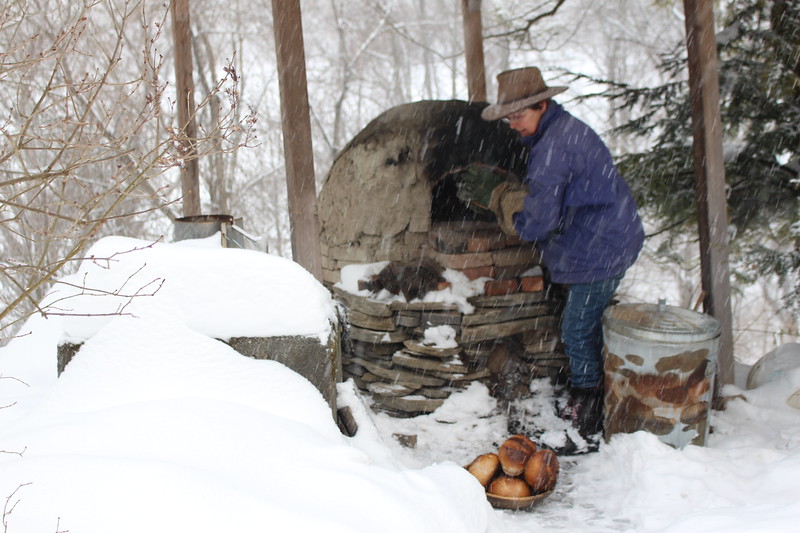Clay Oven Workshops
Build an oven in a day, use it for years
Clay ovens are basic: some mud, some straw, and many hands build an oven that will last years. It's play, it's messy, it's art.
Mud turns adults into kids and makes kids the experts.
We figure it out together. You hold that side and I'll hold this side. And, could you measure the height of this arch?
Each oven is unique, shaped by the materials on hand and the people present.
At the end of it all, there's the party.
You could host a workshop
How it works
We have four goals for our clay oven workshops: (1) The workshop is affordable, (2) the workshop builds community, (3) the workshop builds an oven, and (4) the community then uses the oven on a regular basis.
With those goals in mind, the exact details of each workshop will depend on your needs and your vision. How many people will come? Are we trying to motivate people to go home and build their own oven, or are we using the workshop to bring people together over a common, communal project? Will there be kids or adults, hands on people or more intellectual types? What is your budget, and what material do you have on hand? You or your organization will have unique motivations, participants, and resources; we'll design the workshop to fit you.
Ahead of the workshop, Sam from Backyard Bread or the workshop host will gather materials needed and prepare a base for the oven. On workshop day, we build the oven from the hearth up. We will take breaks for a potluck lunch, and we will have a tent set up with drinks, food, and books so that workshoppers can wander in and out of the mud as they wish. The workshop will run about six hours.
By the end of the workshop, the oven will be done but will need to dry. A pizza party the following week is a perfect time to introduce the wider community to your oven, and get people hooked on wood-fired cooking.
Who pays for what?
This will depend on your situation. Generally, there are two ways these workshops work: (1) you are a private household and want to build an oven at your house with friends and/or strangers or (2) you are an organization and want to build an oven in a public space or at a business.
If you are a private household, I suggest that you cover the costs of the oven materials and any Backyard Bread labor that goes into gathering the materials or building the oven base or roof. You may take on the responsibility of gathering materials, building the base and the roof, and thereby reduce these costs. Or, you may prefer to pay us to do that work. Up to you entirely! Then, we suggest that the workshoppers pay for the workshop itself.
If you are an organization, you may decide to pay for the all the oven materials and associated labor, as well as the workshop so that your members can take the workshop for free.
Call us to talk about how your workshop will happen. We look forward to hearing from you.
How A Wood-Fired Oven Works (Clay or Brick Oven)
It all starts with a fire. Several hours before you want to bake, you light a fire. An oven with thicker walls needs more firing time. A thin oven can be heated up very quickly. As the fire burns, the heat penetrates the clay or brick oven walls and works its way through the wall, heating it hotter and hotter and hotter until the oven chamber is over 1000 degrees and the brick and clay walls will be thoroughly heated.
This is the moment that we pull out what’s left of the fire. As the oven chamber slowly cools off, the hot clay walls give back its heat. Think of all the heat that is stored in 4 inches of 500 degree clay! Enough to bake quite a few loaves of bread, not to mention chicken, veggies, baked beans, tofu…A well-fired oven will cool down slowly over several hours as heat from the walls enters the oven chamber to replace heat that leaks out the doorway or goes into cooking the food.
Clay Oven Gallery













And these blog entries may interest you
Three Reasons to Build a Clay Oven










